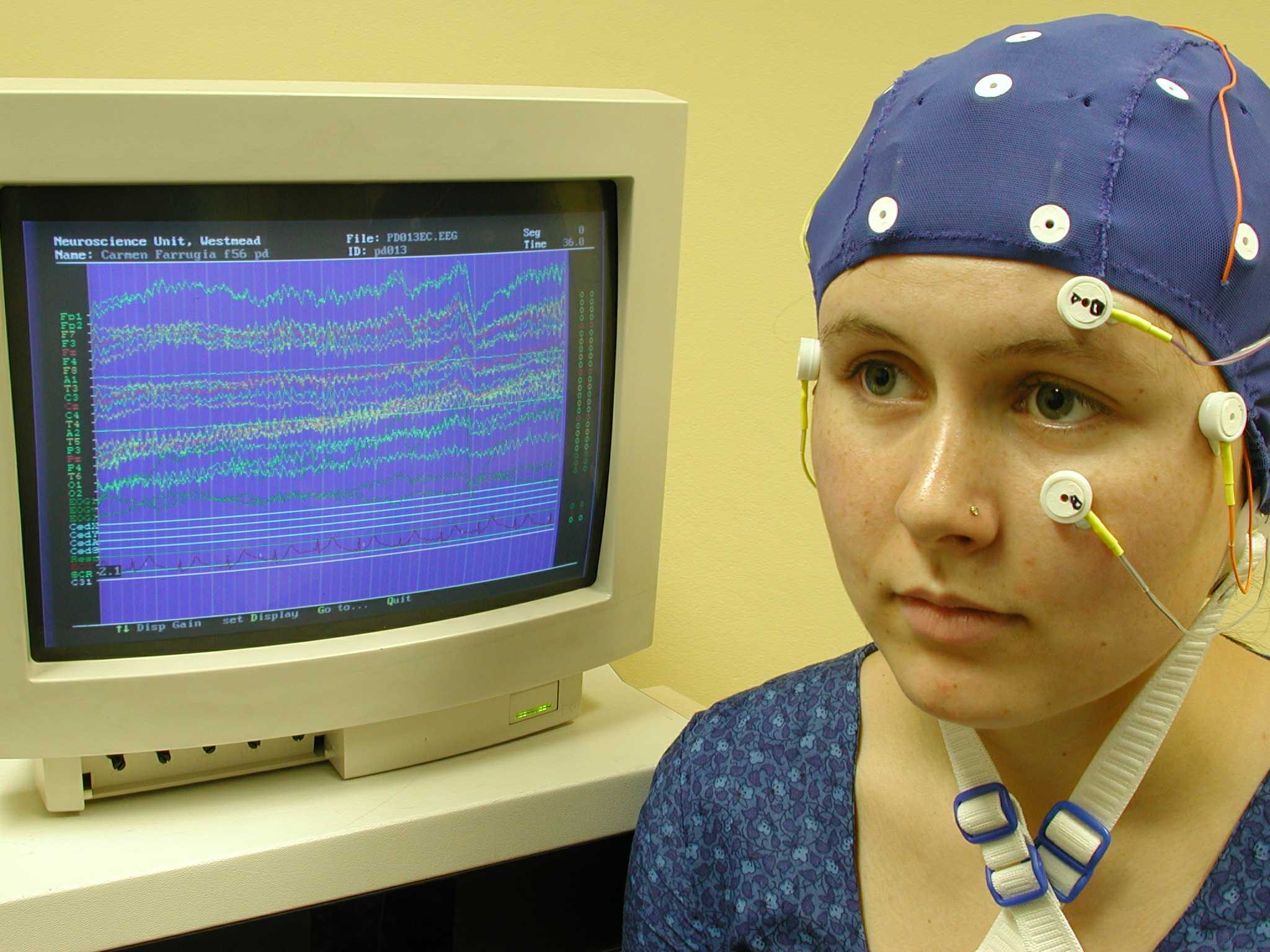 In order to try and understand what it is about meditation that makes it special we have turned to some sophisticated brain imaging technology. A pilot study of advanced Sahaja Yoga meditators using a QEEG (quantitative electro encephelo gram) has yielded some very interesting results. This method is able to produce two-dimensional maps of the electrical changes in the brain as the meditator enters into the state of meditation. Our study was conducted on a small group of meditators who were each asked to meditate while wearing a QEEG headcap designed to pick up the tiny electrical signals produced by the brain. They were instructed to sit quietly for some time, then to commence meditation and signal when they had definitely entered into the meditative state called “thoughtless awareness”.
In order to try and understand what it is about meditation that makes it special we have turned to some sophisticated brain imaging technology. A pilot study of advanced Sahaja Yoga meditators using a QEEG (quantitative electro encephelo gram) has yielded some very interesting results. This method is able to produce two-dimensional maps of the electrical changes in the brain as the meditator enters into the state of meditation. Our study was conducted on a small group of meditators who were each asked to meditate while wearing a QEEG headcap designed to pick up the tiny electrical signals produced by the brain. They were instructed to sit quietly for some time, then to commence meditation and signal when they had definitely entered into the meditative state called “thoughtless awareness”.
The findings were fascinating: all three of the meditators displayed widespread changes in brainwave activity that became more intense as they meditated. Widespread, intense “alpha wave” activity occurred initially. Alpha wave activity is associated with relaxation and is thought to be a beneficial state. In fact alpha activity has been observed in a number of different forms of meditation. The remarkable thing, however, is that as the meditators signalled that they had entered into the state of mental silence, or “thoughtless awareness”, another form of brain wave activity emerged which involved “theta waves” focused specifically in the front and top of the brain in the midline. Precisely at the time that the theta activity became prominent, the meditators reported that they experienced a state of complete mental silence and “oneness” with the present moment, a state which characterises the Sahaja Yoga meditative experience.
There are several remarkable features about this pilot study which warrant further investigation. First, very few meditation techniques have shown this kind of consistent change in the theta range suggesting that the technique may have a unique effect on the brain. We were only able to find one other study, out of several dozen published in the scientific literature, that showed changes of this nature. This study involved a group of Japanese Zen monks.
Practitioners of Sahaja Yoga often claim to feel the chakras (energy centres) within the head open up as the meditative experience intensifies. They assert that it is this experience which is the essence of true meditation and that very few other meditation techniques enable the subject to repeatedly access this experience. The fact that the theta activity is relatively unusual and that it was observed in coincidence with the meditators’ reported experience does suggest that there may be something unique and authentic about the Sahaja Yoga method and its claims.
Second, it is very significant that the changes observed in the brain images occurred at the moment that the meditators reported experiencing the meditative state. This suggests that the QEEG method may make it possible to directly study mystical states of consciousness! The fact that these changes occurred within minutes rather than hours or longer suggests a relatively effortless or spontaneous process (as suggested by the name of the technique – “Sahaja” is Sanskrit for “effortless”).
Third, the focus of theta activity at the front of the head and top of the head, both in the midline, suggest that structures deep within the brain, possibly the limbic system, are being activated. The limbic system is responsible for many aspects of our subjective experiences, such as emotion and mood, so it is no surprise that meditation, which is traditionally associated with blissful states, might involve this part of the brain.
Finally, in speculation, the two areas of theta activity coincidentally correspond to the two main chakras in the brain, according to yogic tradition. The forehead chakra called “agnya” or “third eye” is located in the centre of the forehead while the chakra at the top of the head, is called “sahasrara” or “crown chakra” and is traditionally associated with the limbic system.
